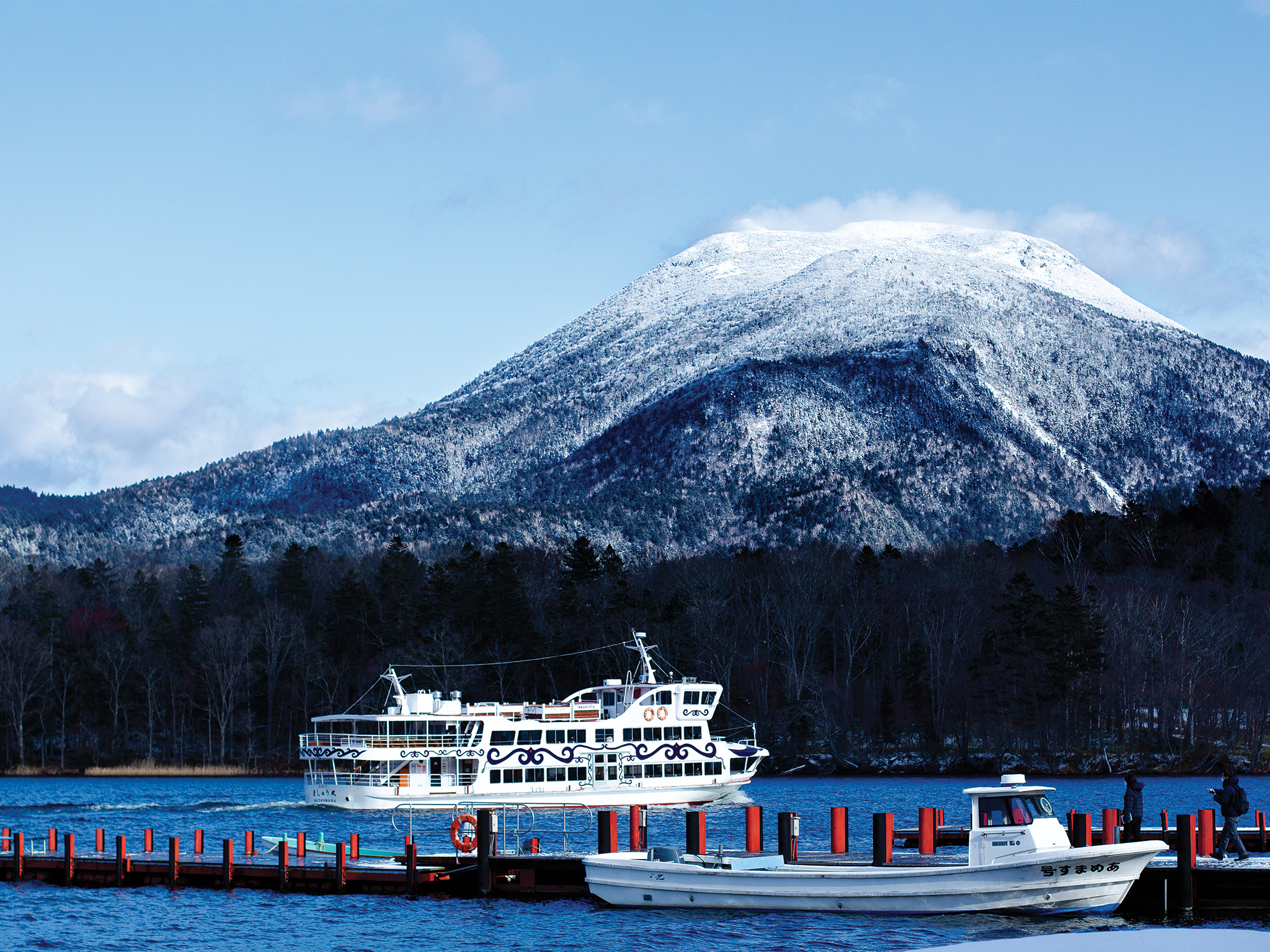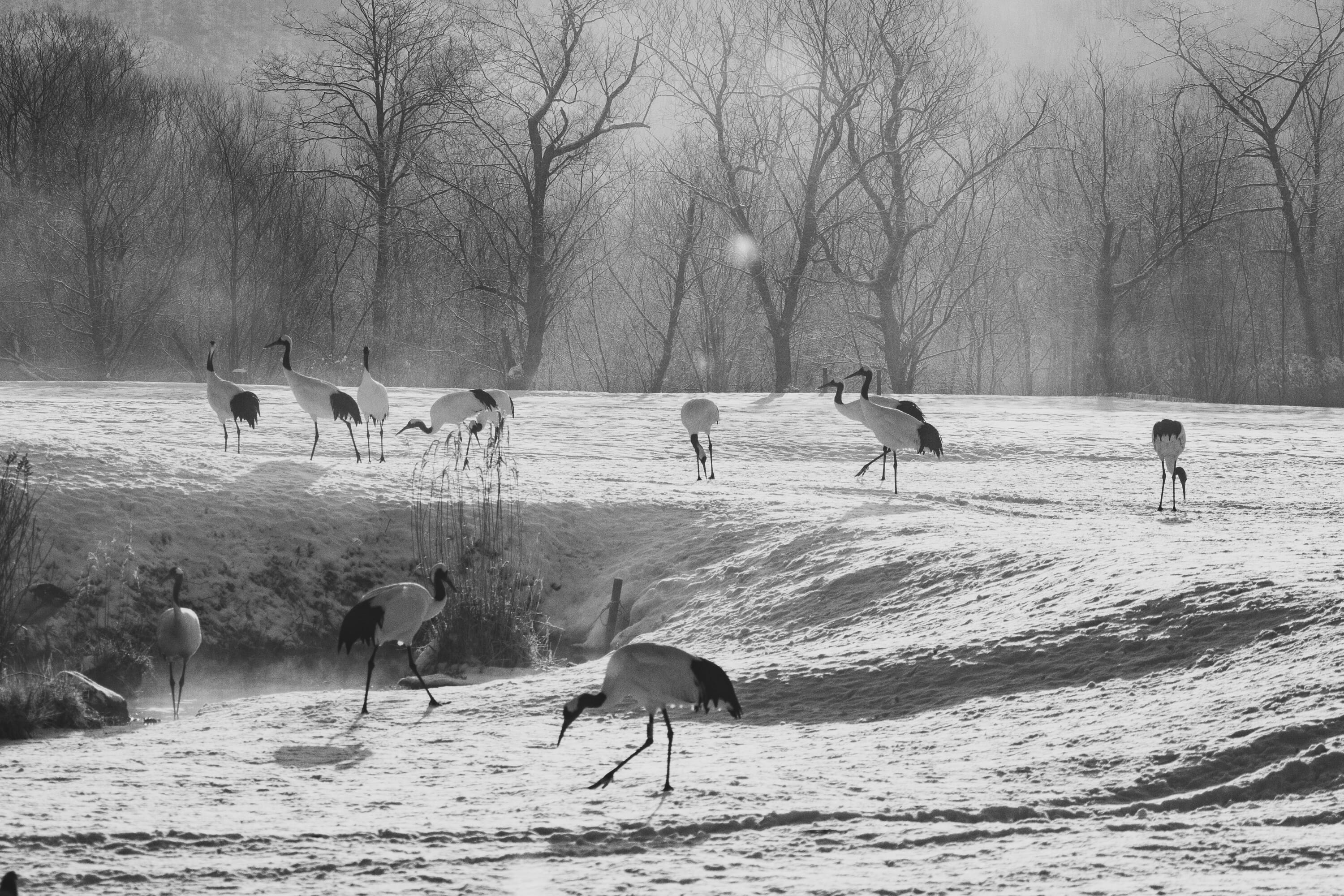
Day 1
8 a.m. Akan International Crane Center
The frozen ground breaks under the weight of the loud tractor, and the roar of the engine and the crack of tires on ice disrupt the peace of the morning. However, for the majestic red-crowned cranes, also known as tancho, it is just breakfast time. At the Akan International Crane Center, visitors can witness the captivating beauty of man and nature working in harmony. Once feared to be extinct, these red-crowned cranes are now making a remarkable comeback, in part due to the artificial feeding program implemented. When food becomes scarce in the vast Kushiro Wetlands during winter, these cranes flock to the center in large numbers. Revered as gods of the marsh by the Ainu people, you can observe their elegant mating dance in the field located behind the center. With over 100 birds at its peak, this place is truly a paradise for bird watchers.
10 a.m. Lake Akan Onsen Town
Follow Route 240 in a straight shot for just over an hour, and you’ll reach Lake Akan. Part of the expansive Akan-Mashu National Park, Lake Akan is an onsen town that provides activities year-round. Home to a large Ainu Kotan, or village, you can buy hand-crafted goods from local artisans. In the fall, Lake Akan hosts the Marimo Festival. Marimo are mossy green balls, a rare natural phenomenon that occurs only under specific conditions. Ride on sightseeing boats or speedboats for a thrill. Hot springs in Lake Akan provide breathtaking infinity pool views of the tranquil lake. For those seeking nature, stay at the local campground and relax in the ashiyu (foot bath), one of several around town. At night, during the summer, visit the local Ainu theater for productions based on Ainu storytelling and folklore.
1 p.m. The Forests of Lake Akan
Near the lake, walk through the Bokke Forest, a short loop with no elevation gain. It starts and ends at the nature center. You’ll see woodpeckers and noble Yezo (also known as Ezo) sika deer resting under the canopy. At the farthest end of the loop is a bokke, a mud volcano. In winter, rent snowshoes or cross-country skis for a day and navigate the same loop. Lake Akan freezes over completely in deep winter. For navigating the ice, it is best to hire a local nature guide. However, from early February you can enjoy the Lake Akan Ice Festival. Rent snowmobiles for a short or long course and ice fish for wakasagi (a fish of the smelt family). Have them fried up to eat after. Higher up in the mountains is the Meakan Onsen, located at the base of the Mount Meakan trail. There’s a four-hiking loop that takes you up to a breathtaking panoramic view. It’s a great challenge for hikers.

4 p.m. MOO and Sunset Cruise
The heart of Kushiro is set right on the Kushiro River, which leads into the port. Visit MOO, a sprawling building right next to Nusamai Bridge. Vendors line the halls of each floor, selling everything from camping and outdoor lifestyle products to sweets and locally caught seafood. At East Hokkaido Activity Base (EHAB), you can rent gear for the many campgrounds surrounding Kushiro. Across from the fisherman’s wharf, known as MOO, is the Sunset Cruise Sea Crane. For ¥5,000, you can enjoy a 90-minute cruise through the Kushiro Port, culminating with an unobstructed view of the Kushiro sunset. On foggy days, the cruise’s cancellation will be announced in advance, giving you plenty of time to make backup plans. The Kushiro sunsets are said to be one of the best in the world.
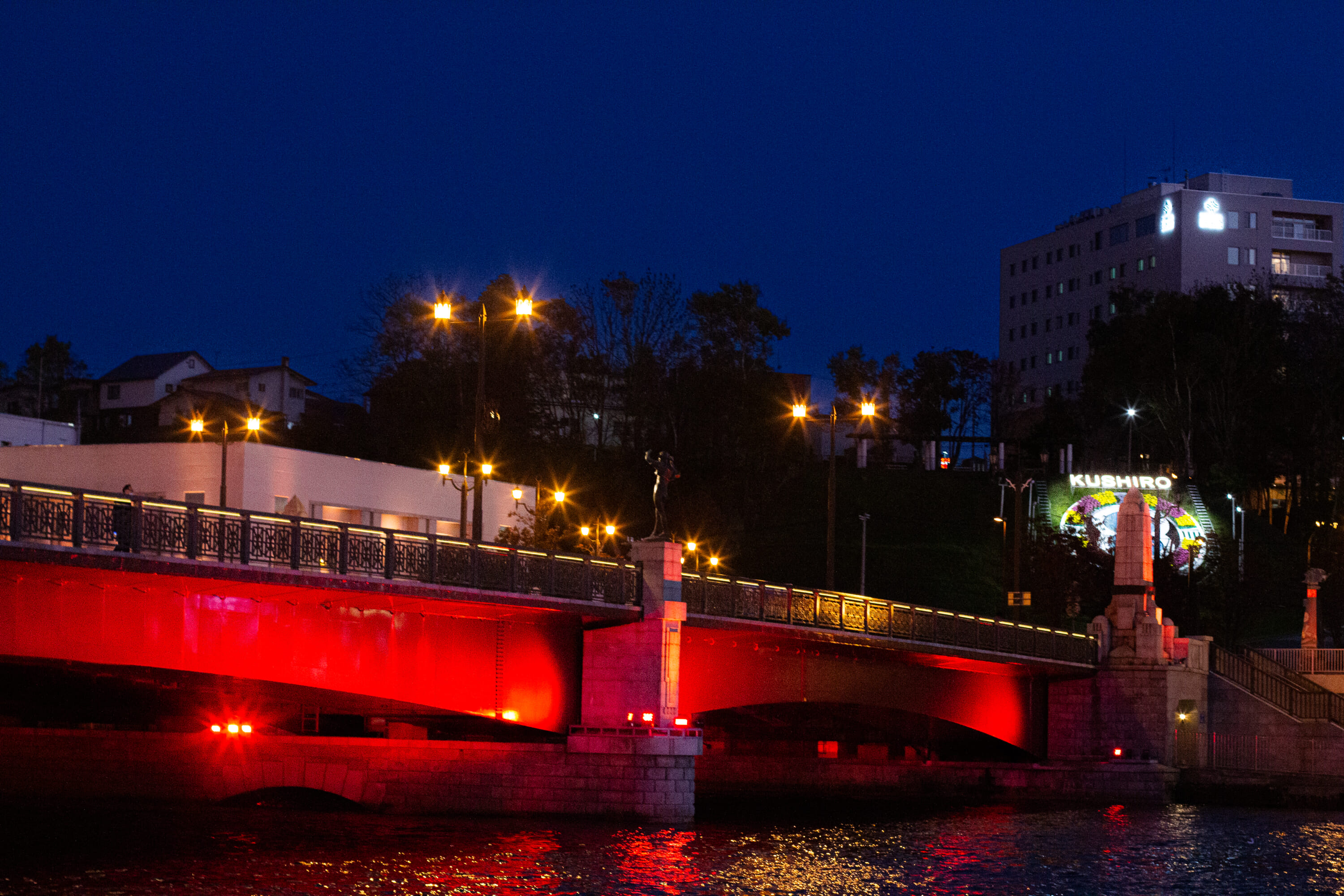
7 p.m. Dinner at Ganpeki Robata
After the cruise is over, walk back across Nusamai Bridge. By the river is a long outdoor area called Ganpeki Robata. It is open from the end of May until October, offering the chance to experience fresh seafood while seated outdoors. To purchase food at this place, you will need to buy food tickets from the first vendor. Each ticket is worth ¥1,000 and can be separated into smaller values. It is important to note that these tickets are non-refundable, so it is recommended to buy them as you go instead of purchasing a large number upfront. If you don’t use all your tickets, don’t worry, as they will still be valid until the end of the season. Upon entering, you will need to purchase additional tickets for the specific food categories offered by separate vendors.
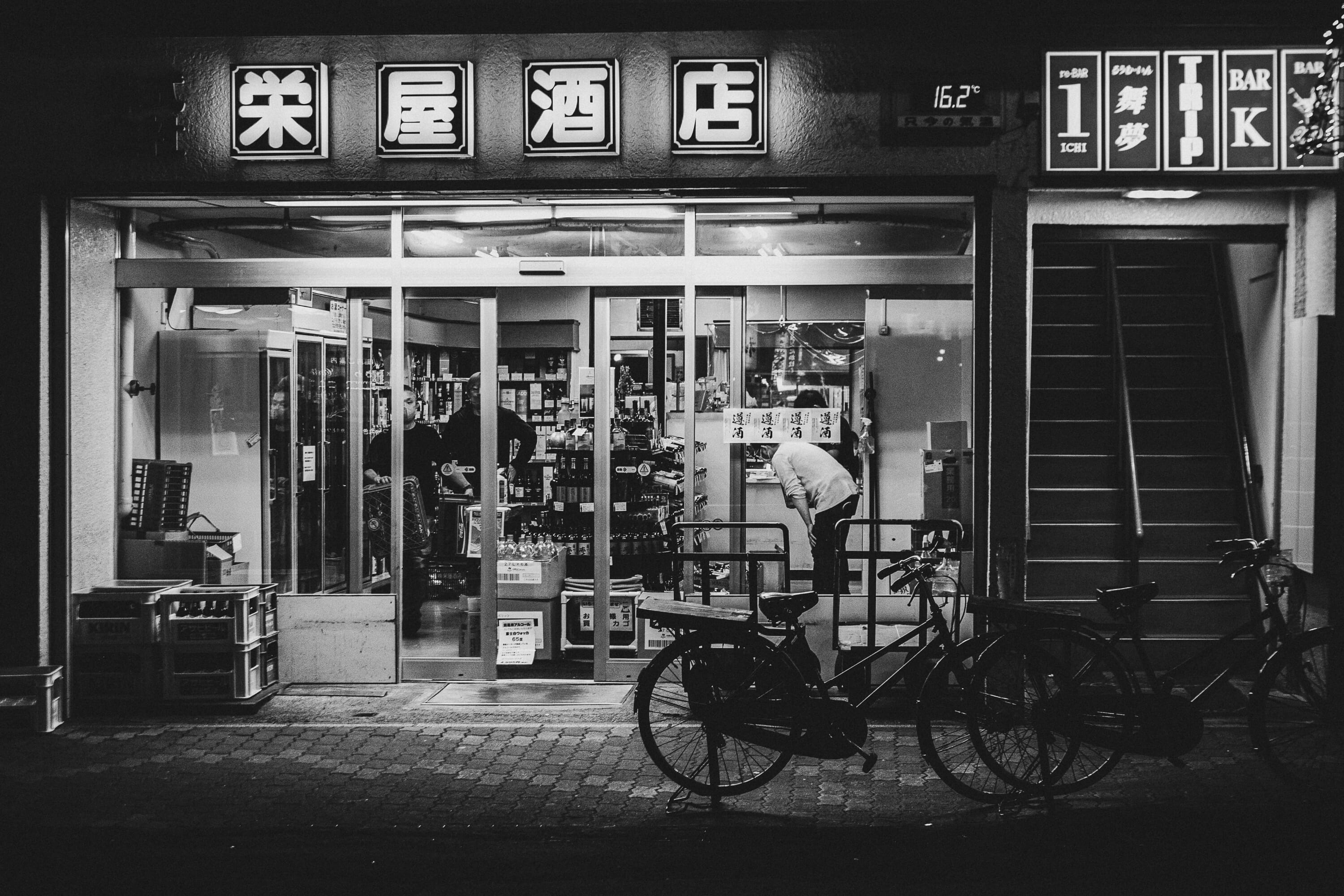
9 p.m. Drinks in Suehiro
After dinner, stroll over to Suehiro, the entertainment district located just across from Kita-odori, for drinks. The Akachochin Yokocho (say that five times fast) has many small spaces, like Tokyo’s Golden Gai. Advanced reservation recommended. For better chances of enjoying a nice brew, check out Daniel 2 for craft beer. East Hokkaido is home to a new craft brewery, Brasserie Knot, a fantastic location that marries nature and clean flavors for a refreshing drink. If you are looking for a late-night dive bar, Unity Bar, tucked away in the side street next to Daniel 2, is recommended. Strike up a conversation with strangers at Hot Sauce while listening to an impressive collection of records.
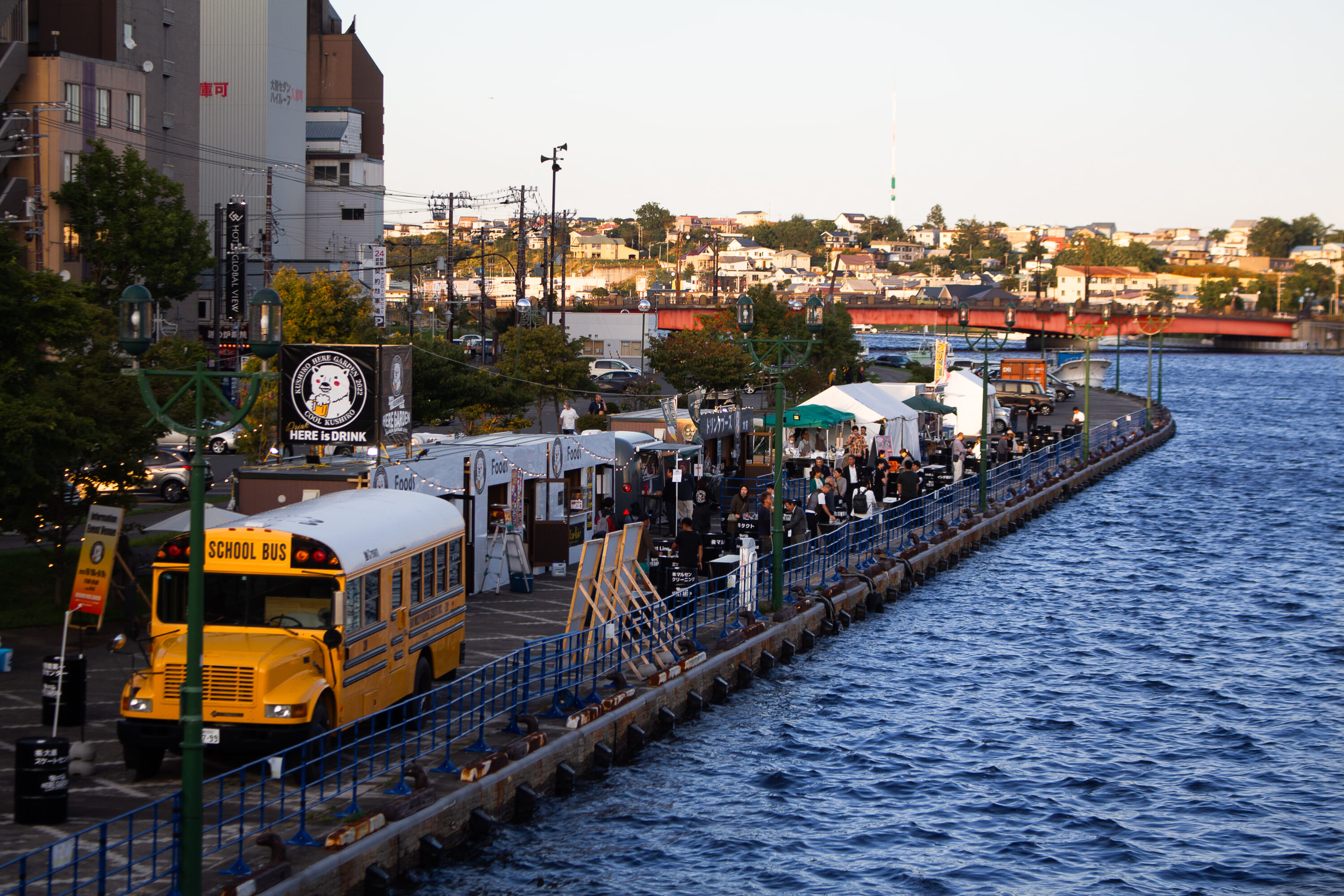
Day 2
10 a.m. Ramen Time
Ramen for breakfast? Say no more. Located near downtown in the historic district, Maruhira Ramen serves a classic, big bowl of Kushiro-style ramen. Thin noodles are cooked to perfection in a flavorful bonito-based soup, making it a surefire way to warm up on a cold day. It’s wise to get there early as this spot is popular with both locals and tourists. However, the wait is always short. Please note that Maruhira is only open from 9:30 a.m. until 3 p.m.
Just up the hill from Maruhira in Yonemachi Park, you’ll find a lighthouse that overlooks Kushiro. On clear days, you can enjoy impressive views of the Hidaka Mountains in the distance, as well as Mount Meakan and Mount Oakan. Behind the lighthouse is the Itsukushima Shrine, which boasts an impressive complex with a beautiful courtyard.
A short walk from Itsukushima Shrine is Mon Coeur, a local bakery that’s perfect for enjoying a cup of fresh coffee and some artisanal bread.
11 a.m. Shitsugen Train (Winter-Summer)
The Norokko and the Fuyu-no-Shitsugen trains depart from Kushiro Station in the morning and head into the beautiful wetlands during summer and winter, respectively. You can purchase tickets for these trains at the counter located at Kushiro Station. The Norokko Train offers an open carriage with stunning views of mountains, forests and wetlands. Throughout the year, you have the opportunity to see magnificent wild animals such as the Yezo deer and red-crowned cranes. On the other hand, the Fuyu-no-Shitsugen Train is a steam locomotive that is enclosed. It emits thick steam upon departure, making you feel like you’re on a train headed to Hogwarts. Both trains offer snacks and other refreshments for purchase. On the Fuyu-no-Shitsugen Train, you can also enjoy warming up with seafood snacks and hot sake.
Noon Kushiro Shitsugen
Enjoy viewing a wild paradise throughout the seasons. The wetlands are covered in verdant green foliage in the spring and summer, deep auburn and yellow colors in fall and blanketed in snow throughout winter. The red-crowned cranes can be found near Otowa Bridge, nesting in the water, and the bridge itself is perfect for photography. High on the hills, the Hokuto Observatory greets you with a delightful walk through the forest. The Kushiro Marsh Observatory features a gift shop and provides a 360-degree vantage point of the wetlands and Kushiro itself. You can witness the sunset from Hosooaka Observatory, which is located at the far end of the park and can be accessed by train from Kushiro Shitsugen Station.
4 p.m. Kushiro Washo Ichiba Fish Market
A short distance from the station is Washo Ichiba, the largest seafood market in Kushiro. Try katte don, a rice bowl covered with morsels of seafood you choose from 50 different vendors. Established in 1954, it is a source of pride for the citizens of Kushiro. Bowls of rice start at a base of ¥100 to ¥400 and seafood purchased to your liking. Recommended are the botan shrimp, hotate scallops and shimesaba.
8 p.m. Soul Food
For a city on the sea, you might be surprised to know that Kushiro’s most famous contribution to the culinary world is arguably fried chicken. Zangi (Hokkaido-style fried chicken) was born in this foggy port city back in the late 1950s. Two shops specialize in making it: Torimatsu, where zangi was first made, and Toriyoshi, both within the downtown entertainment district. Zangi is when fried chicken has its batter seasoned before frying. Normally, the batter is seasoned with soy sauce, but the recipe varies from one shop to the next. Piping hot when served, it’s a fantastic soul food to warm you up on a frigid Hokkaido winter night.

A solitary port city offering sweeping vistas of marshlands contrasted by noble mountains, Kushiro is a great escape from concrete jungles. It’s a wonderful retreat to see primeval forests and to discover Ainu culture. Also, view one of the grandest sunsets while enjoying seafood along the river. Who knows what you’ll find there. The adventure is yours.

